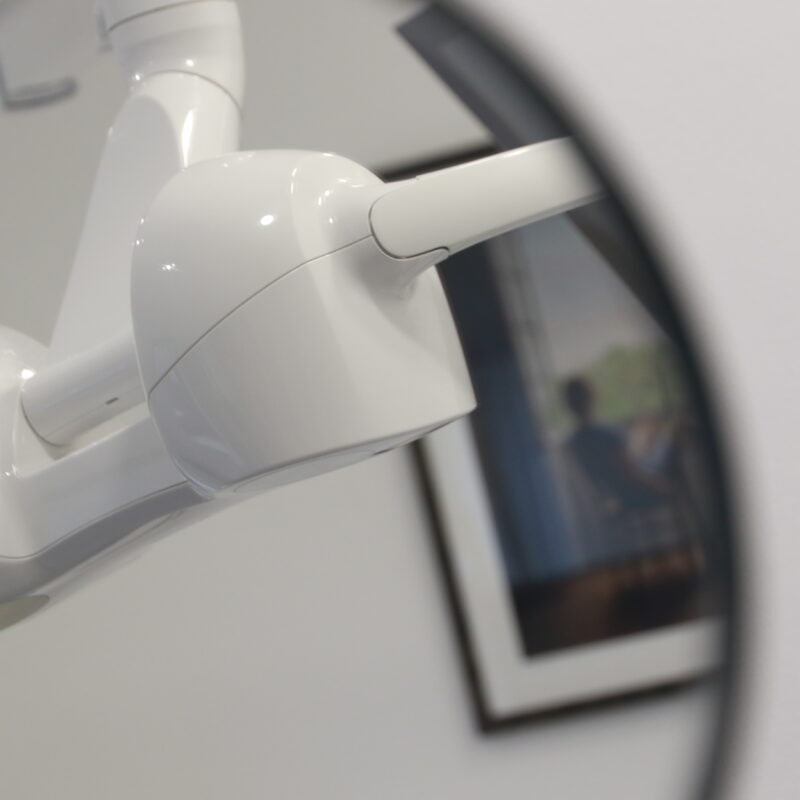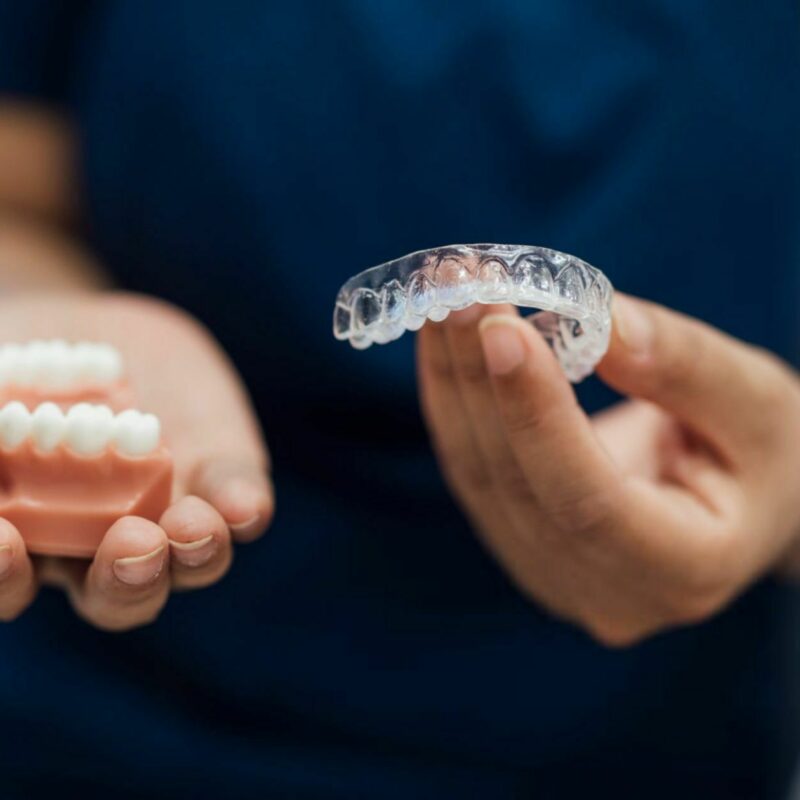When you visit your dentist for a regular check-up, they might find that a tooth requires a filling. Among the various types of dental fillings available, dental composite fillings are particularly popular due to their tooth coloured appearance. We thought it may be useful to explain the process, from your initial check-up to the final follow-up, and address common concerns, including whether this procedure is painful.

The Check-Up: Identifying the Need for a Filling
During a routine dental check-up, your dentist examines your teeth and gums for signs of decay, damage, or wear. This examination typically includes:
- Visual Inspection: Using a mirror and probe to check for visible cavities, cracks, or discoloration. Air drying the teeth and gums helps improve visibility.
- X-Rays: These images help detect decay between teeth and under existing fillings, which might not be visible to the naked eye.
Potential Diagnoses:
- Cavities: Caused by tooth decay, which leads to holes in the teeth.
- Cracks or Chips: Resulting from trauma, grinding, or biting on hard objects.
- Worn Enamel and Dentine: Due to acidic foods, aggressive brushing, or bruxism (teeth grinding).

Why Composite Fillings?
Composite fillings, also known as resin fillings, composite bonding one just bonding, are popular for several reasons:
- Aesthetic Appeal: They can be closely matched to the color of your natural teeth.
- Conservative: As composite fillings are adhesive, less tooth material needs to be removed or drilled, and, in some cases, no drilling is required prior to placing the filling.
- Durability: Composite resins bond well to the tooth structure, and the material is resilient to wear with each filling lasting, on average, around 8 years.
- Versatility: Suitable for both front and back teeth.
The Procedure
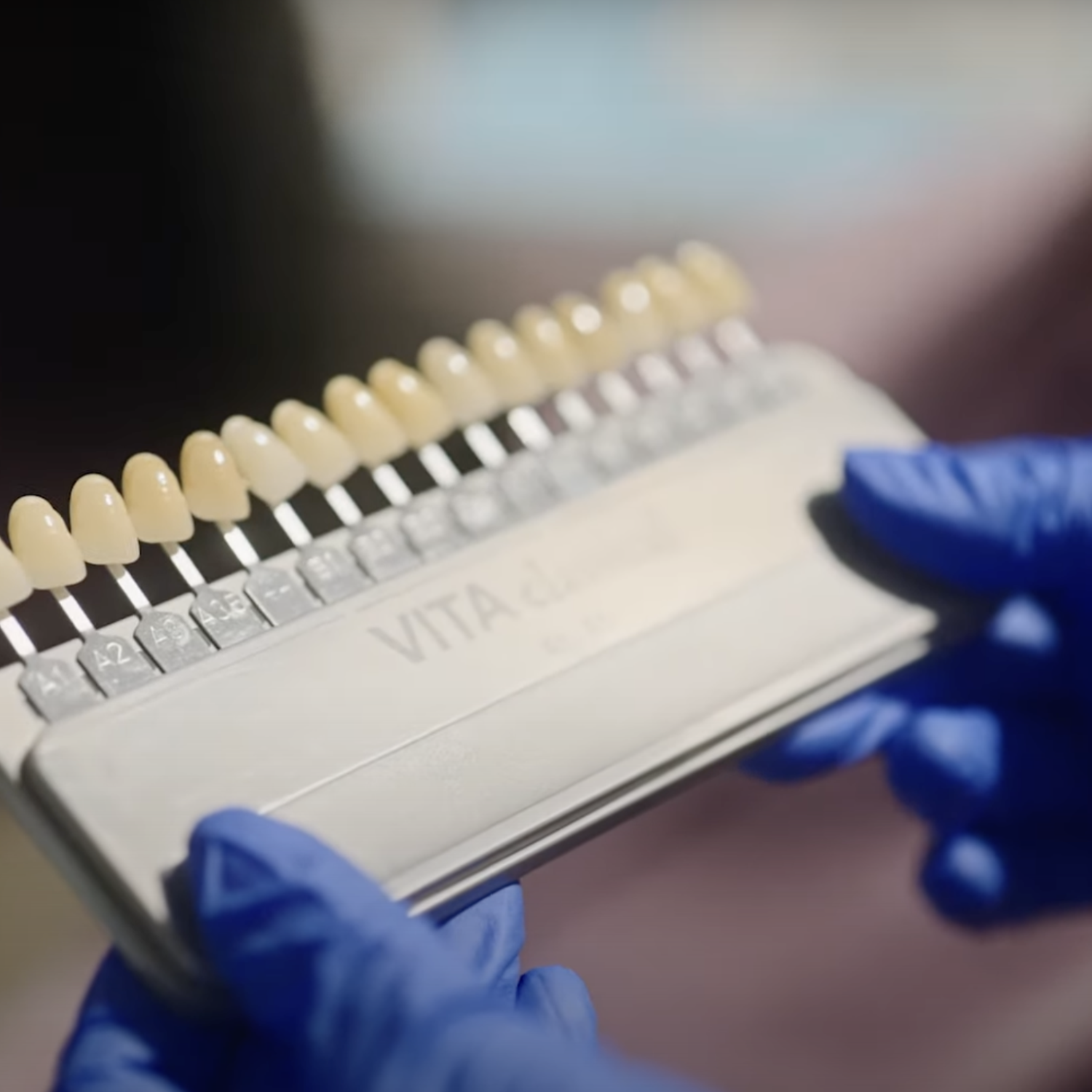
Preparation
- Discussion: Your dentist explains the procedure, discusses the benefits and risks, and obtains your informed consent.
- Shade Selection: Using a shade guide, the dentist selects a composite resin color that matches your natural teeth. With front teeth, the colour may be quite complex to match and special shades of composite may need to be ordered - darker or lighter colours, varying translucencies, and sometimes mimicking cracks.
Anesthesia
- Local Anesthesia: A numbing agent is administered to the area around the affected tooth to ensure you feel no pain during the procedure.
Tooth Preparation
- Isolation: A rubber dam may be placed around the tooth to keep it dry and free from saliva, and protect your mouth and airway at he same time.
- Decay Removal: The dentist uses a dental handpiece or drill to remove decayed or damaged tooth material, ensuring the cavity is clean and ready for the filling.
- Cavity Shaping: The dentist shapes the cavity to help the filling material bond better.
Etching and Bonding
- Etching: Phosphoric acid, usually in the form of a gel, may be applied to the prepared cavity with a small brush. This creates, on a microscopic level, a rough surface for better bonding. Some bonding agents are self etching, so this phase is not required, though the enamel may still be etched preferentially.
- Rinsing and Drying: The etchant is rinsed off and the tooth is dried, but it remains slightly moist to facilitate bonding. If saliva touches the tooth, the microscopic changes may be reversed, hence the need for good moisture control by the nurse-dentist team, and the rubber dam is very useful for this.
- Bonding Agent: A bonding agent is applied and light-cured. The bond adheres, most strongly micro mechanically to the enamel but also to the dentine, and the filling adheres turn to the bond. The light used to cure both the bonding agent and the composite is a pure blue light of a specific wavelength (540nm). Whilst not harmful to the eye in limited and indirect viewing, repeated exposure to the light, or staring at the light may cause damage, and so the dental team will use an orange screen to filter out the blue light, and protect them whilst they are viewing the light directly.
Composite Placement
- Incremental Layering: The composite resin is placed in small increments, with each layer being light-cured before the next one is applied. This method reduces shrinkage and enhances strength.
- Layer Shaping: Each layer is carefully shaped to match the natural contours of the tooth.
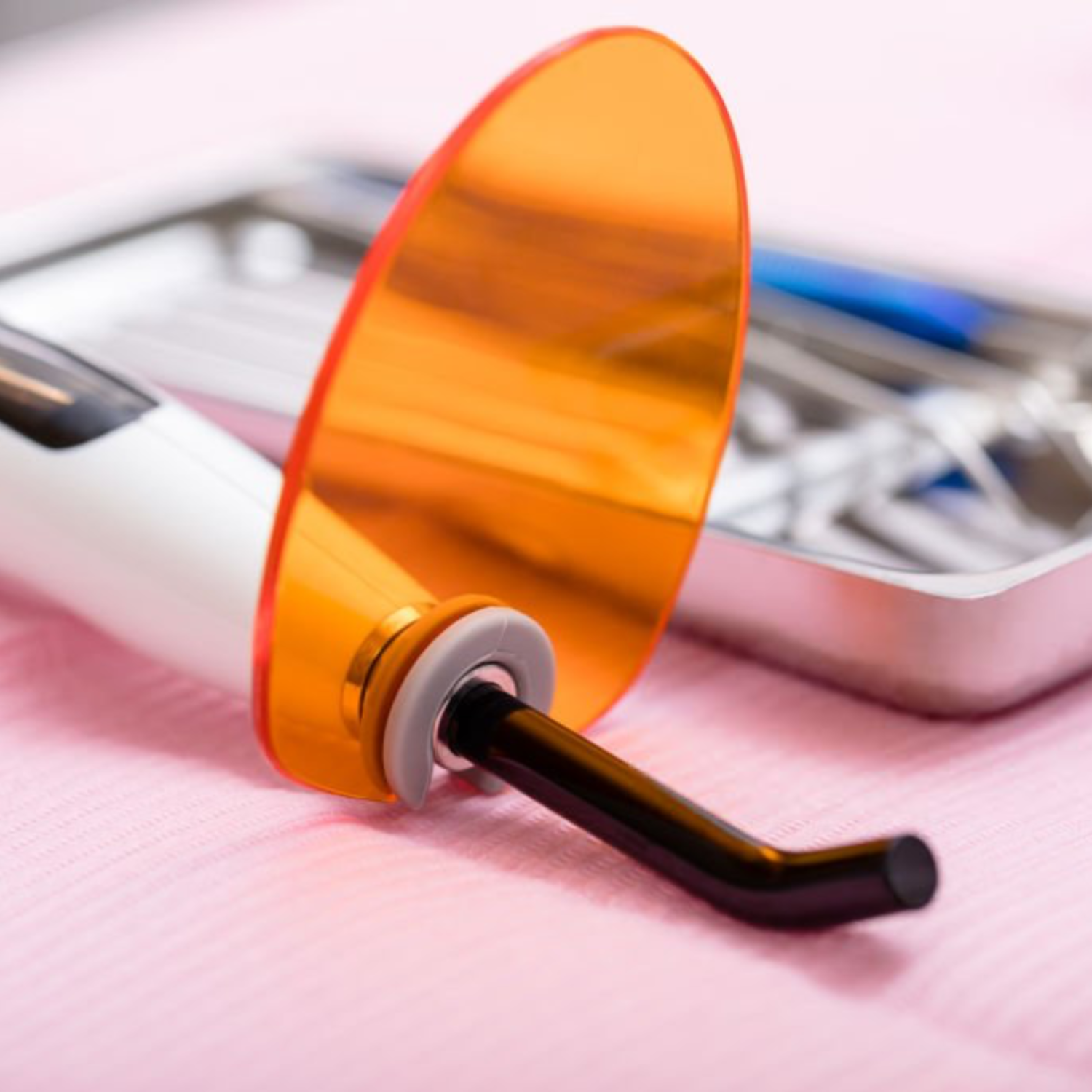
Curing
Light Curing: A dental curing light is used to harden each layer of composite resin.
Finishing and Polishing
- Initial Shaping: The dentist uses finishing burs (drill bits) and discs to shape the filling, ensuring it fits well with your bite.
- Polishing: The composite is polished to a high gloss to prevent plaque buildup and ensure a natural look.
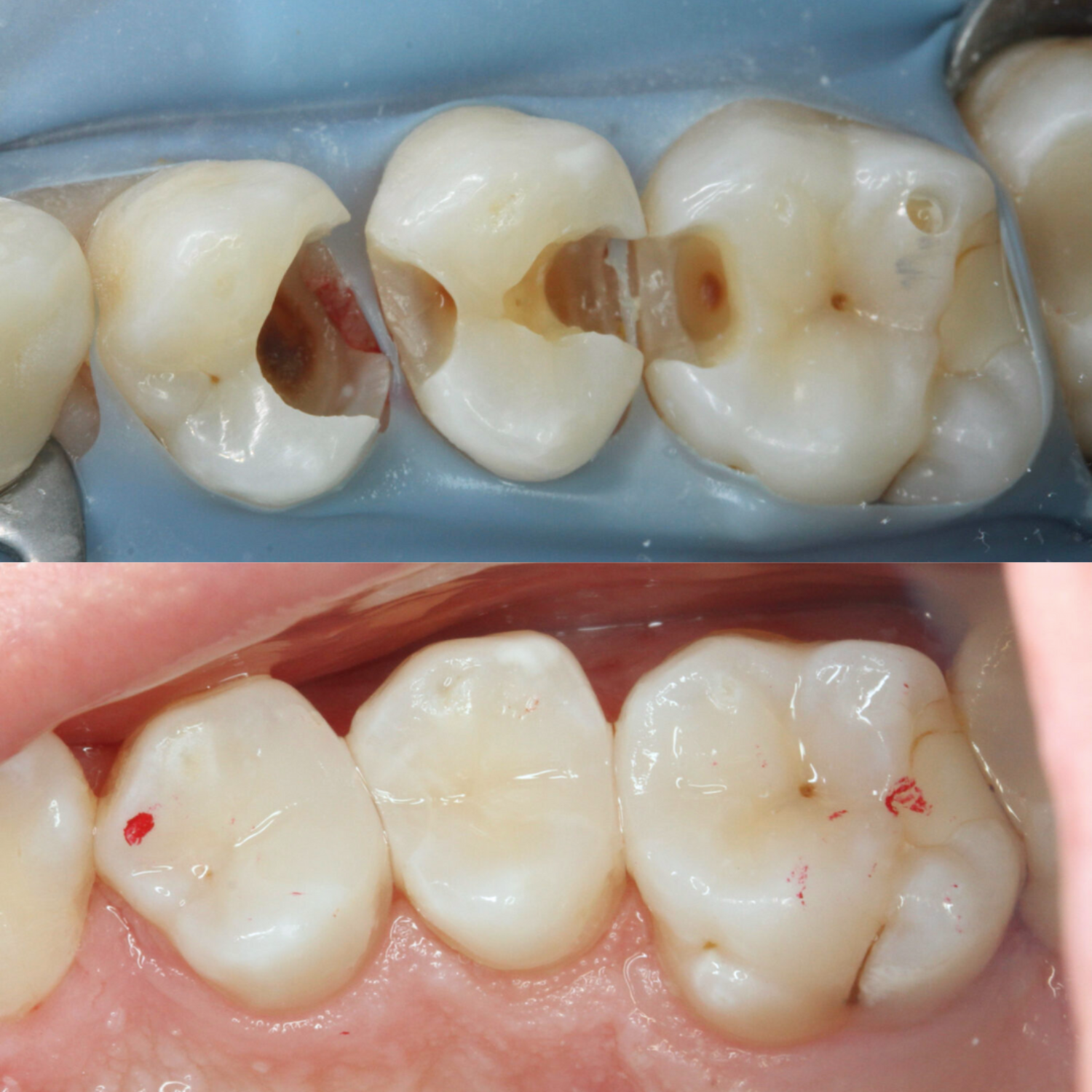
Occlusal Check
Bite Adjustment: Your dentist checks your bite using articulating paper and makes any necessary adjustments to the filling.
Follow-Up and Aftercare
Post-Operative Instructions
- Care Advice: You are advised to avoid hard foods for a certain period and maintain good oral hygiene to protect the filling.
- Sensitivity: Mild sensitivity to hot and cold and biting may occur but in most cases resolves within a few days. Sometimes the sensitivity, particularly with bigger cavities, may last 2-3 months. Placing the filling may highlight other issues, such as cracks in the teeth. In such a case, the tooth will remain sensitive until further treatment is undertaken.
Follow-Up Appointment
- Assessment: A follow-up appointment may be scheduled to ensure the filling is functioning correctly and to address any concerns you might have.

Is the Procedure Painful?
The good news is that placing a direct composite filling is typically not a painful procedure. Local anesthesia effectively numbs the area, so you shouldn't feel any pain during the treatment. You might feel some pressure or mild discomfort, but it's generally minimal. After the procedure, you might experience slight sensitivity or discomfort, which usually subsides within a few days.
Conclusion
Composite fillings are an excellent choice for repairing decayed or damaged teeth, offering both aesthetic and functional benefits. The process, from diagnosis to final follow-up, is straightforward and designed to ensure your comfort and the longevity of the filling. If you have any concerns or questions, don't hesitate to discuss them with your dentist—they are there to help you achieve the best oral health possible.
Considering composite fillings?
Book your dental exam nowMore
from the blog
Blog /Advice
Is High-Fluoride Toothpaste Safe?
Benefits, Risks, and How It Protects Against Tooth Decay
Read moreBlog /Advice
Nutritional Effects on Oral Surgery Outcomes
Preparing Your Body for Faster Recovery
Read moreBlog /Advice
PRF facials - Platelet-Rich Plasma
Learn how platelet-rich fibrin treatments naturally restore youthful skin
Read more
